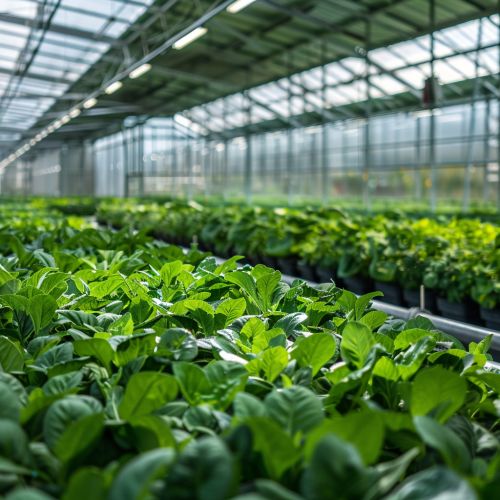Controlled Environment Agriculture
Introduction
Controlled Environment Agriculture (CEA) is a technology-based approach towards food production. The aim of CEA is to provide protection and maintain optimal growing conditions throughout the development of the crop. Production takes place within an enclosed growing structure such as a greenhouse or building. This method of agriculture is designed to maximize the amount of crop yield while minimizing the amount of resources required.


History
The history of Controlled Environment Agriculture can be traced back to the Roman Empire. Emperor Tiberius is said to have used primitive greenhouses, known as "specularia", to grow cucumbers year-round for his daily salads. However, the modern concept of CEA began to take shape in the 20th century with the development of greenhouses and other agricultural technologies.
Techniques
Controlled Environment Agriculture employs a variety of techniques to achieve its goals. These include:
- Hydroponic Systems: In hydroponics, plants are grown in a nutrient-rich water solution instead of soil. This allows for precise control over the nutrients the plants receive and eliminates the need for soil.
- Aeroponic Systems: Similar to hydroponics, aeroponics also does away with soil. However, in this system, plants are suspended in air and nutrients are delivered via a fine mist.
- Aquaponic Systems: This is a combination of aquaculture (raising fish) and hydroponics. The waste produced by the fish serves as organic food for the plants, and the plants naturally filter the water for the fish.
- Vertical Farming: This technique involves growing plants in stacked layers, often integrated into other structures like skyscrapers. Vertical farming allows for a large amount of food to be grown in a small space.
Benefits
Controlled Environment Agriculture offers several benefits over traditional farming methods. These include:
- Resource Efficiency: CEA uses significantly less water and land than traditional farming. This is especially beneficial in areas where these resources are scarce.
- Year-Round Production: As the growing conditions are controlled, crops can be grown year-round, regardless of the season.
- Controlled Environment: CEA allows for control over the environment, including temperature, humidity, light intensity, and CO2 concentration. This enables optimal plant growth and reduces the risk of disease and pests.
- Increased Crop Yield: Due to the controlled conditions and the ability to grow year-round, CEA can produce higher crop yields than traditional farming.
Challenges
Despite its benefits, Controlled Environment Agriculture also faces several challenges. These include:
- High Initial Costs: The cost of setting up a CEA facility can be high, especially for advanced systems like aeroponics and aquaponics.
- Energy Consumption: CEA requires a significant amount of energy, especially for lighting and temperature control.
- Technical Knowledge: Successful CEA requires a good understanding of plant physiology, nutrition, and control systems.
Future of Controlled Environment Agriculture
The future of Controlled Environment Agriculture looks promising. With the global population projected to reach 9.7 billion by 2050, there will be increased demand for food. CEA, with its ability to produce high yields in a small space, may be a key part of the solution to this challenge.
